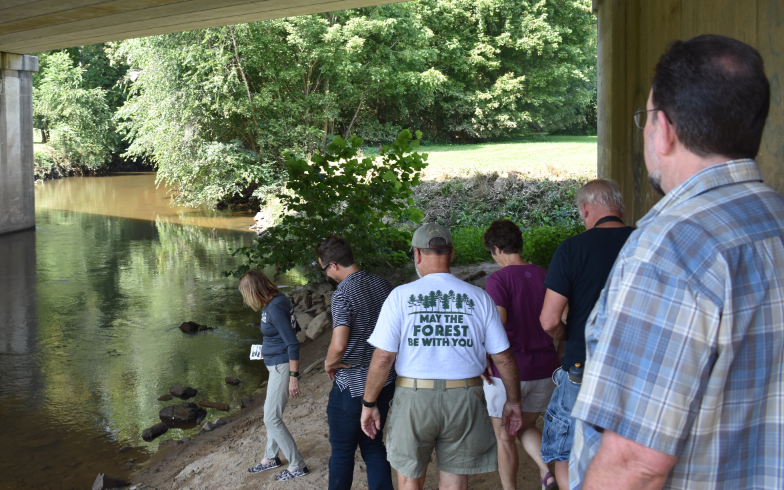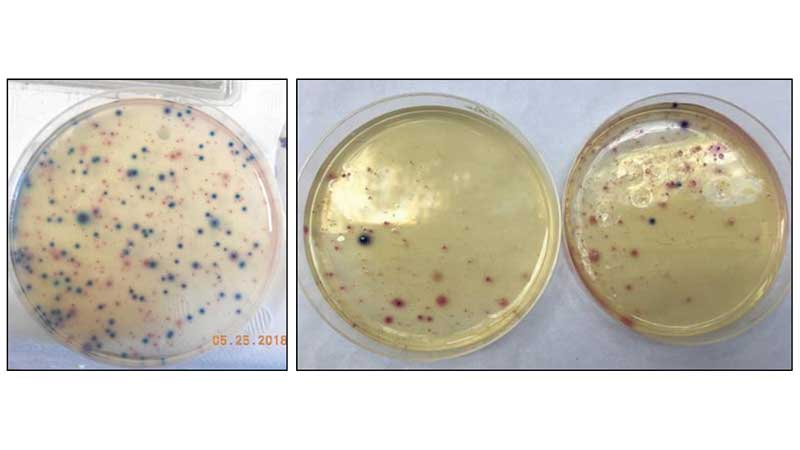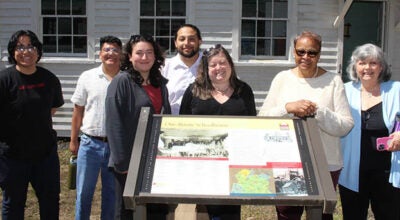Testing the Appomattox River
Published 6:46 am Wednesday, August 22, 2018
Those who boat, canoe or play by the Appomattox River can thank volunteers from the Heart of Virginia and representatives of the James River Association (JRA) for monitoring and reporting the bacterial levels of the river.
Six area volunteers from Farmville, Cumberland and Blackstone among other places, and JRA Staff Scientist Ben Watson met Thursday at Appomattox River Company (ARC) on North Main Street in Farmville to collect water samples and store them in an incubator, where the water stayed for 24 hours until it was ready to be tested.
They test the water weekly from May until September.
The Town of Farmville is one of 23 testing sites throughout the James River for bacteria. The James River is approximately 340 miles long and stretches from Botetourt County in the Roanoke area to the Chesapeake Bay. The Appomattox River runs into the James River.
The James River watershed, areas of land that separates rivers, “encompasses approximately 10,000 square miles, which makes up almost 25 percent of the state,” the JRA website cited.
Once a week, volunteers go to the Farmville testing site, underneath the bridge at the downtown Farmville and Cumberland County line.
Once volunteers finish collecting the water samples, they will go to the ARC and measure the turbidity of the water, how cloudy the water is. They also use an incubator to keep the water samples at a consistent temperature of 99 degrees for 24 hours. After that, they test it for bacteria.
The main bacteria they study is Escherichia coli, or E. coli. E. coli typically presents itself in the sample through blue dots.
Watson and volunteer Daphne Cole, of Blackstone, said bacteria typically tests within the safe range in the Appomattox River. When heavy rainfall in May flooded the Appomattox River, Watson and Cole found levels of E. coli that exceeded the healthy rates.
They said that is common after floods, as the river becomes stirred up and mixes with the environment around it.
Following Friday’s test, the turbidity came up to 6.38 Nephelometric Turbidity Units (NTU). The water should ideally be less than 60 NTU, the JRA website cited.
Bacteria was listed as 67(colony-forming unit) cfu per 100 (milliliter) ml, according to the JRA website.
“Fecal coliform (E. coli) bacteria concentrations over 235 cfu per 100 ml may increase the likelihood for swimmers to contract illness in case water is ingested,” the JRA website cited.
During the May flood, bacteria came to 500 cfu per 100 ml.
The JRA then submits the water testing samples to state organizations such as the Virginia Department of Game and Inland Fisheries.
Cole said the JRA operates by funds set aside after a toxic poison polluted the James River near Hopewell and limited swimming and fishing in the area.
“They believe that more people need to be on the water to understand how their activities impact clean water,” Cole said.
Cole said she and her husband started getting involved with the JRA and testing the health of the Appomattox River in 2017 by riding a canoe and monitoring the river.
“Since I am coming from Blackstone, I felt that people in Farmville needed to participate in the project and started to ask groups about participating,” Cole said.
Volunteers can be hard to come by, Cole said, so she was relieved when she contacted the Virginia Master Naturalists (VMN) Chapter for the Prince Edward County area among other organizations and found volunteers nearby willing to test the water samples. Betsy and Al Lookofsky, Tim Kennel, and Warren Rofe were from the Farmville Chapter of the VMN, and Kathy Brandt from the James River Chapter.
Cole and the five other volunteers are what are called citizen scientists, where citizens monitor the environment. This can include monitoring monarchs, counting birds for National Park Service, counting eggs in vernal pools and in the case of the JRA, monitoring bacterial levels of the water along the James River.
With recent, large-scale projects announced in nearby counties such as the Atlantic Coast Pipeline and compressor station proposed through Buckingham County and a proposed 1,200-acre landfill in Cumberland County, concerns residents have mentioned included the impact these projects could have on the health of the James River and nearby watersheds.
Watson said the JRA’s main objective is to study the bacteria of the water. Environmental concerns often come from sediment from land runoff, or when land falls into and is carried by bodies of water.
Watson said the sample testing aims “to come up with as good of answers” for these concerns as possible.
“Many other groups and state organizations are keeping their eyes on that,” Watson said.
Ways people can prevent contaminants in the water, volunteers said, include avoiding throwing litter or other items into the water, keeping waste away from creeks and streams, or in the case of farmers, keeping cows from stepping into or depositing fecal matter into the water.
Kennel thanked the Appomattox River Company for letting them use the facility for testing.
“These folks have been wonderful for letting us inside their business twice a week,” Kennel said.
Brian Vincent, operations manager with Appomattox River Company, said he offered his office space to the volunteers to give them a place to do their testing.
Vincent said he and the other representatives are “all about helping” the group monitor the river.
One activity associated with being a citizen sciencentist for the JRA includes being a River Rat, a volunteer who focuses on studying the health of area rivers.
The JRA educates potential River Rats and shows them ways to volunteer, such as canoeing and kayaking to survey the rivers , monitor for E. coli and turbidity collection, man booths at various events and painting storm drains to bring awareness to the importance of keeping roadways and land clean for stormwater.
To learn more about the JRA and its water quality monitoring program, visit https://jrava.org/what-you-can-do/volunteer/water-quality-monitoring/.







